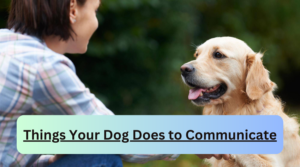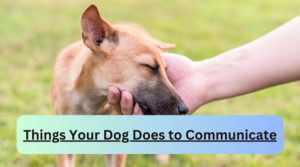In the world of canine companionship, understanding the subtle ways your furry friend communicates is key to a strong bond. Dogs use a rich language of their own, encompassing body language, vocalizations, and gestures. By learning to decipher these signals, you can bridge the gap between human and canine communication.
When it comes to dog communication, there’s more than meets the eye. Our four-legged friends have an intricate way of expressing themselves. Here’s a breakdown of some essential aspects of dog communication:

Barking and Vocalizations
Dogs have a diverse range of vocalizations, each serving a unique purpose. Some common types of barking include:
- Excitement Bark: When your dog is thrilled to see you or play, they may have a high-pitched, rapid bark.
- Alert Bark: If your dog senses a stranger or something unusual, they’ll often bark in a more intense and sharp manner.
- Fear or Anxiety Bark: Dogs may bark when they feel threatened or anxious, and this bark tends to be low-pitched.
Understanding these vocal cues is essential. For more details on interpreting your dog’s vocalizations, check out the American Kennel Club’s guide.

Body Language
Just as our body language speaks volumes about our feelings, a dog’s body language is a treasure trove of information. Here are some key elements to watch for:
- Tail Position: A dog’s tail can tell you a lot about their mood. A high wag often signifies excitement, while a low wag may indicate submission.
- Ear Orientation: Forward-facing ears typically indicate attentiveness, while flattened ears suggest fear or submission.
- Posture: A confident dog will stand tall, while a submissive dog may cower or roll onto their back.
For a more comprehensive understanding of your dog’s body language, the ASPCA’s guide is an excellent resource.
Tail Wagging
Contrary to popular belief, not all tail wags indicate a happy dog. The position and speed of the wag can reveal a lot. A high wag often signifies excitement, while a low wag may indicate submission. For further insights into the world of tail language, you can read Psychology Today’s article.
Understanding your dog’s communication cues is crucial for a harmonious relationship. Continue to explore these facets of dog communication to build a strong bond with your furry companion.
